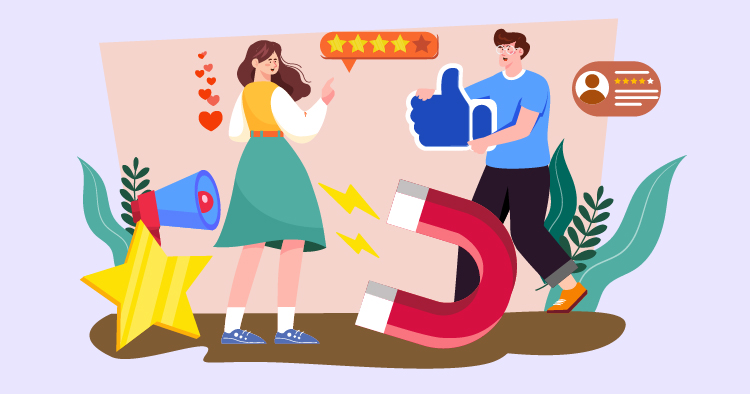The journey doesn’t end there once a customer has moved through your sales funnel. Retaining customers is crucial for the sustainable growth of any business, as it is more cost-effective than acquiring new ones. This article will explore practical strategies to keep customers engaged and loyal after they have made a purchase. By understanding the importance of customer service, personalized communication, and providing value beyond the initial sale, businesses can foster long-term relationships that benefit both the customer and the company. We’ll delve into practical tips and innovative approaches to ensure that your customers remain satisfied and continue to choose your services or products.
Understanding the Transition from Awareness to Consideration
Moving from creating awareness to fostering consideration can be tricky. When building awareness, you aim to inform potential customers about their problems. But when you reach the consideration stage, you must show them why your product or service is the answer they sought.
It’s important not to rush things and push your product too hard, as this can put people off. They’re still weighing their options and must be guided gently, not run into buying. Content like insightful articles, in-depth guides, and helpful how-tos can provide real value without being too forceful.
It would be best if you also thought about how the tone of your content might need to change. When just getting people’s attention, you can talk about general issues that affect everyone. But when it’s time to get them thinking about buying, your content has to be more focused. It should clearly explain what makes your product unique and why it’s better than the competition.
As potential customers learn more and get closer to purchasing, their information needs change. Early on, they might just be trying to understand their problem. Later, they’ll want to know why your solution is right for them. Providing the right content at the right time is critical to guiding leads toward choosing your product.
Things to Consider When Creating Content to Move Leads Down the Funnel
Create Interesting, Engaging Content
When creating content for your business, consider how to make it fun and exciting for the people you want to reach. Using stories is a great way to do this because it helps people connect with what you’re saying. It’s like when you hear a good joke or a touching story—you remember it and want to tell others about it. That’s the kind of reaction you want from your audience. So, when writing or putting together a video, ask yourself, “What would make someone smile, think, or feel inspired?” That’s your ticket to creating content that sticks.
Address Consumers’ Pain Points
Struggling with Digital marketing? Book Your Free Strategy Session!
- 30-Minutes Session
- Expert Insights
- Data-Driven approach
- Optimized Strategies for Your Goals
Imagine you’re talking to someone with a problem they can’t solve. They’re frustrated and looking for answers. Now, if you step in with a solution that works, you’ve just made a friend for life, right? That’s how you should approach your content. Dive into the issues that your potential customers are dealing with every day. Show them you understand what they’re going through and offer honest, practical advice they can use to get past those hurdles. This approach wins their trust and shows that you know your stuff. You’re not just selling something; you’re helping them get to a better place, and that’s a powerful way to build a relationship with your audience.
Show That Your Business Is a Viable Solution
When it’s time to highlight what sets your business apart, think about straightforward ways to demonstrate your brand’s strengths. You want to present your product or service as the best choice. Use real-world examples of your business solving problems, like case studies, to do this effectively. You can also use side-by-side comparisons to show how your offerings stack up against the competition. And don’t forget about live demonstrations or virtual tours of your product in action.
Your Unique Selling Proposition (USP) should be at the forefront of these efforts. It’s the one thing that makes your business stand out. Make sure it’s easy to understand and grabs attention. When people see your USP, they should immediately grasp why they should choose your brand over others.
Content for the Awareness Stage
At the awareness stage, your goal is to reach out broadly. You want to connect with as many people as possible and get them to start thinking about a problem they might not even know exists. To do this, create content that’s easy to share and understand. Blog posts that introduce the topic, videos that start the conversation, and guides that lay out the basics are perfect for this.
Try to make your content as relatable and shareable as possible. Infographics that boil down complex ideas into simple visuals or quick social media posts that hit the key points can be very effective. Avoid industry jargon and complex language. The simpler it is, the more likely people will pass it along.
Your main goal at this stage is to educate and establish your brand as a trusted authority. Offer valuable information without immediately trying to sell something. This approach positions your brand as knowledgeable and builds relationships with potential customers.
Lastly, when it comes to calls to action (CTAs) in the awareness stage, keep them light and non-committal. Phrases like “Learn More” or “Read More” invite potential customers to get to know your brand without feeling pressured. It’s about making that first connection and setting the stage for future interactions.
Content for the Consideration Phase
When shoppers start considering their options, they seek the best solutions to their needs. Your job is to provide them with content that highlights your product or service’s capabilities and clearly shows how it can improve their lives.
Struggling with Digital marketing? Book Your Free Strategy Session!
- 30-Minutes Session
- Expert Insights
- Data-Driven approach
- Optimized Strategies for Your Goals
Think about hosting webinars that discuss the details of your offer or creating comparison charts showing why your product stands out from the competition. In-depth how-to guides can also help potential customers, giving them a clearer idea of how to use your product in their daily lives.
Reviews and testimonials can be powerful in convincing someone that your product is worth trying. When people see that others have had a positive experience, they’re more likely to believe they will, too. Encourage your happy customers to share their stories. You could ask them to write a review or even record a short video about how your product has helped them.
Now’s the time to be more direct with your calls to action (CTAs). Instead of a gentle “Learn More,” you might invite potential customers to “Request a Demo” or sign up for a “Free Trial.” You want to nudge them toward taking that next important step.
Even though a customer might lean toward buying from you, remember they might still look at others. Offering something extra like a free trial, a discount, or unique content just for them could be the thing that convinces them to choose you. Ensure these perks are easy to find and understand in the content you create for this phase.
Keeping customers should always be part of your strategy, no matter where they are in the buying process. You’re setting the stage for a robust and ongoing relationship by continually providing them with valuable and relevant content. After all, the goal isn’t just to win customers; it’s to keep them coming back and build loyalty to your brand.
Final Thoughts
Customer retention should be a key focus for any business aiming to achieve long-term success. Implementing a robust post-purchase engagement plan is essential to keep your customers returning. It’s about creating a customer experience that resonates with your audience, offering support when needed, and appreciating their loyalty. By consistently delivering value and showing genuine care for your customers, you can build a loyal customer base that repurchases and advocates for your brand. Remember, a retained customer is not just a source of recurring revenue but also a potential ambassador for your business.



